The verdict: The 2017 Jeep Cherokee's roomy cabin and refined ride impress, but even though its nine-speed automatic transmission has gotten better with age, it's still not fully baked.
Versus the competition: The Cherokee rides better than the class norm, and it's one of the rare non-luxury compact SUVs with an available V-6 engine (which is the engine to get). However, you pay a penalty for that engine at the gas pump, and the price for a higher-end trim level can be steep.
Life is good at Jeep. An all-SUV brand at a time when interest in SUVs is surging, Jeep is stocked for the hot small SUV segment with the likes of the subcompact Renegade, the redesigned Compass compact SUV and the Cherokee, which is on the larger end of the compact SUV spectrum. Cherokee competitors include the Honda CR-V, Toyota RAV4 and Nissan Rogue; see their specs compared here.
It's no exaggeration to say that the Cherokee — which returned to the Jeep lineup in its current form as a 2014 model — was highly polarizing when it debuted due to its radical styling. It was such an intriguing vehicle that Cars.com decided to buy one as a long-term test car, and we spent the next year reporting on our experiences with it.
The 2017 Cherokee starts at $24,790 for a front-wheel-drive Sport trim level. Our top-of-the-line Overland test vehicle, however, cost considerably more. It came with the 3.2-liter V-6 engine; a more sophisticated four-wheel-drive system with a selectable Low range; active safety and off-road features; an upscale interior with a leather-wrapped dashboard; Berber floormats; and heated and ventilated leather front seats. The as-tested price was $41,975.
Exterior & Styling
The Cherokee is a good example of how designs tend to seem less extreme the more you see them. Apart from the seven grille slats that are a Jeep hallmark, the Cherokee's face was different from everything else in the lineup when it debuted — and it still is today. With thin LED running lights perched above the headlights, there's still an edginess to the Cherokee's design, but it's become familiar to the point that it's no longer jarring when you see one on the road.
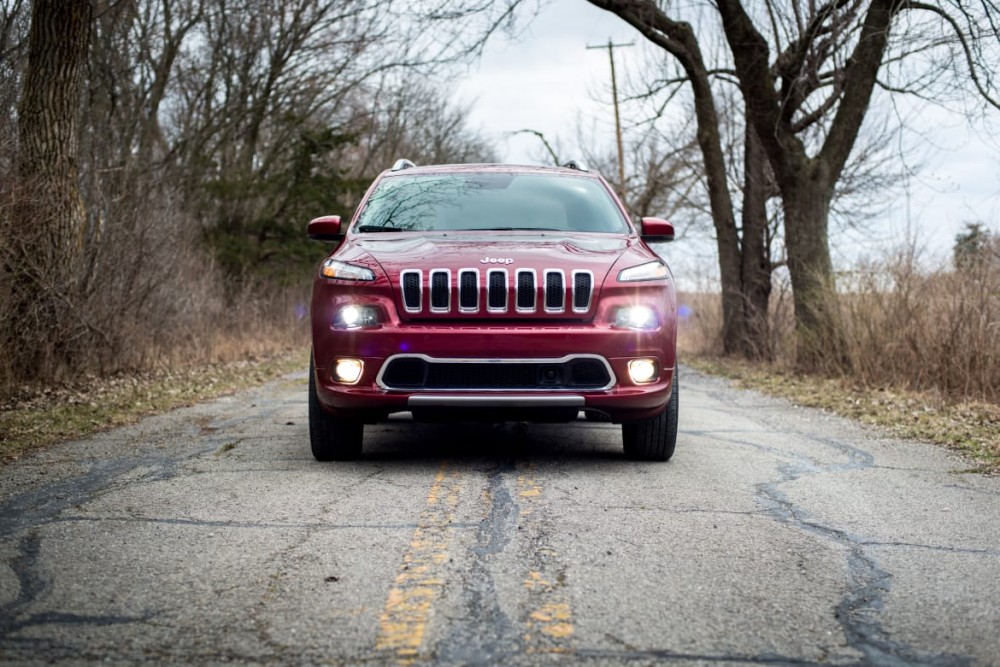
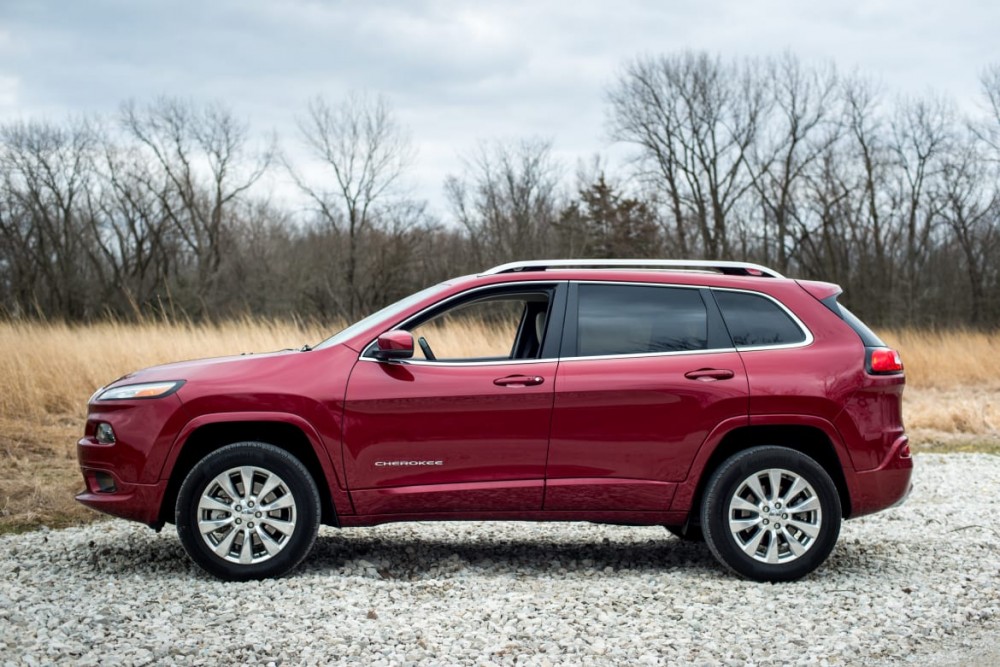
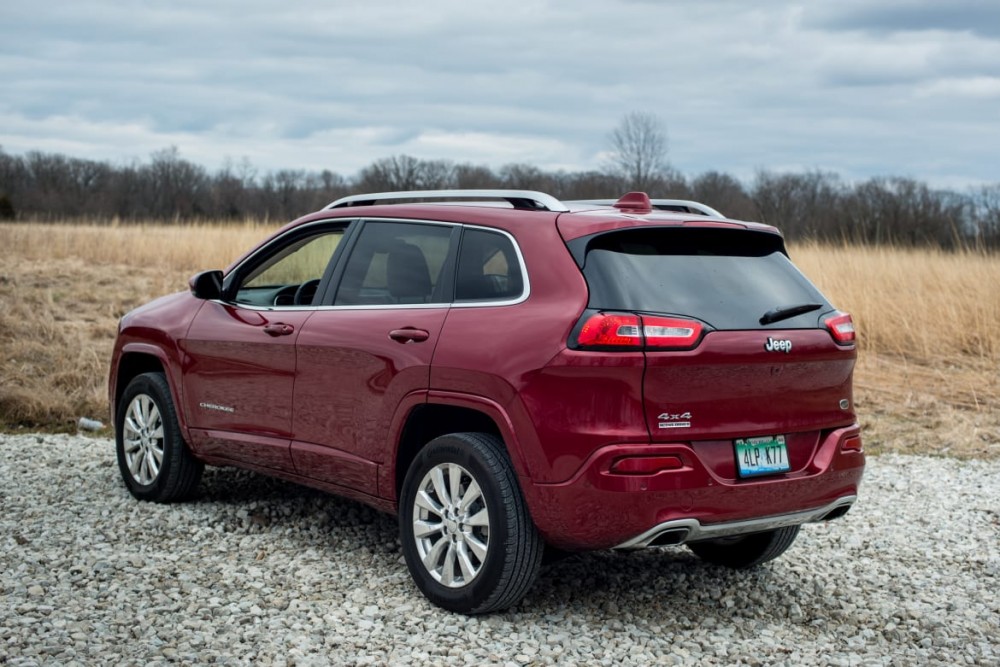
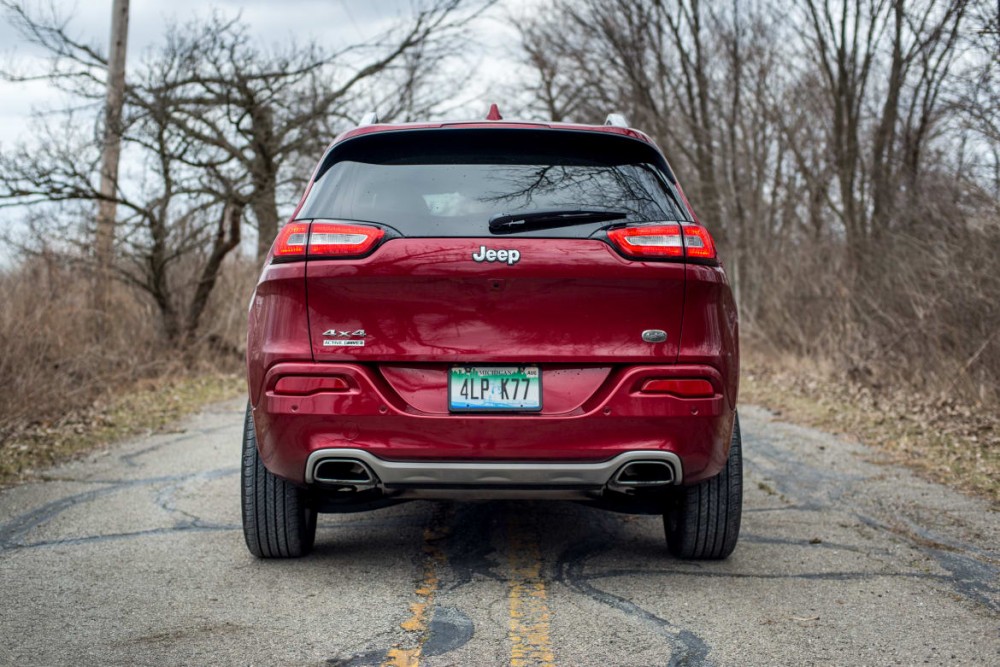
However, it doesn't appear that the Cherokee is going to usher in a new look for the Jeep brand; it's the only model that's adopted such a radical aesthetic. The Renegade's front end is comparatively traditional, and the redesigned Compass takes after the popular Grand Cherokee.
Driving It
Automatic transmissions aren't typically a deal-breaker, but the Cherokee's nine-speed automatic transmission had a detrimental effect on our long-term Cherokee's driving experience — so much so that many editors, myself included, wouldn't buy it again. Our long-term tester had the base four-cylinder engine, but after testing other Cherokees with the optional V-6 — including this one — it's become clear that it's better suited to the nine-speed automatic.
Still, there are shortcomings. For one, the transmission still suffers from sometimes-clunky responses, particularly when shifting from Park or Reverse into Drive. This is something modern automatic transmissions just don't do anymore with any regularity, which is why it sticks out here.
A big problem with early versions of the nine-speed was its tendency to lunge from 2nd to 3rd gear with an unrefined shift. That wasn't evident in this Overland model, which shifted smoothly for the most part, but the transmission is intent on keeping engine rpm low. It's good for gas mileage but not for when you need more power, like when passing at highway speeds.
The 271-horsepower, 3.2-liter V-6 is a refined, strong engine that accelerates the Cherokee easily. Yet even with nine forward gears to work with, gas mileage isn't great: With the Overland's optional low-range four-wheel-drive system, it's rated 18/26/21 mpg city/highway/combined. The same engine with the base four-wheel-drive system is rated 23 mpg combined. The all-wheel-drive four-cylinder Cherokee is rated as high as 21/28/23 mpg. Popular compact SUVs like the Honda CR-V and Toyota RAV4 get up to 27/33/29 mpg and 22/28/25 mpg, respectively, with all-wheel drive, but both are powered by four-cylinder engines and don't offer a V-6.
The suspension manages bumps in a refined way that's as good as what you get in many luxury-badged compact SUVs.
Three four-wheel-drive systems are available: Jeep Active Drive I, Jeep Active Drive II and Jeep Active Drive Lock. Jeep Active Drive I is a single-speed system, while Jeep Active Drive II includes a Neutral setting in addition to a low range. Jeep Active Drive Lock is only available for the Trailhawk trim level, where it adds a mechanically locking rear axle and a Rock mode for the Selec-Terrain system.
Even though our Cherokee Overland test car had the low-range four-wheel-drive system and various skid plates to protect vulnerable components off-road, it was civilized on the street. The ride is firm but comfortable, and though you feel bumps and other road imperfections, the suspension manages them in a refined way that's as good as what you get in many luxury-badged compact SUVs.
Interior
Even in lower trim levels, the Cherokee has a nice interior, with materials that lend a high-quality look. The Overland steps things up by adding luxury features such as a leather dashboard, a heated wood and leather steering wheel, and perforated Nappa leather upholstery.
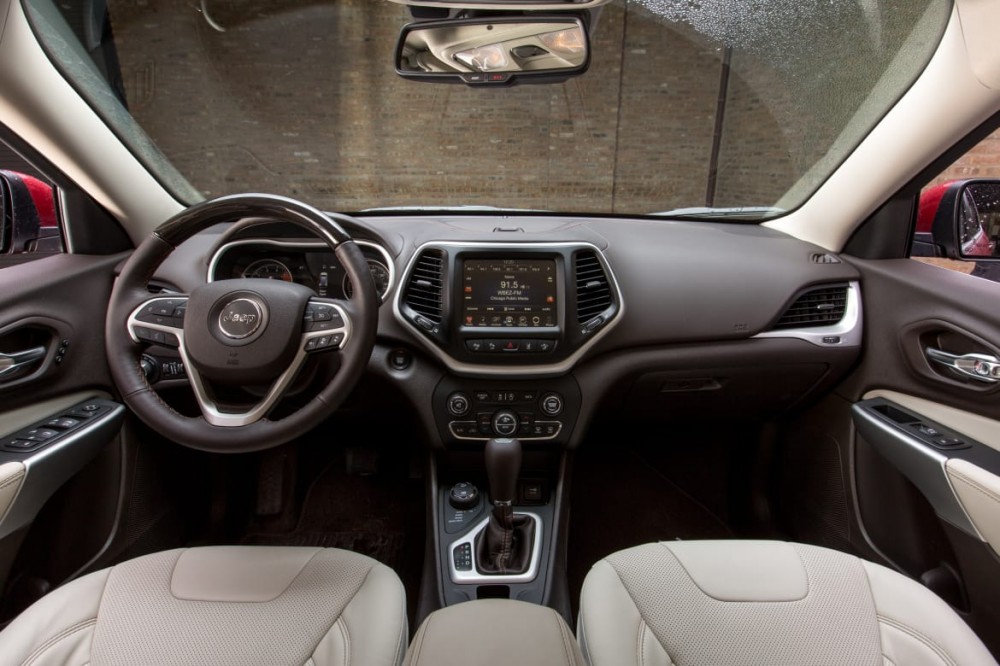
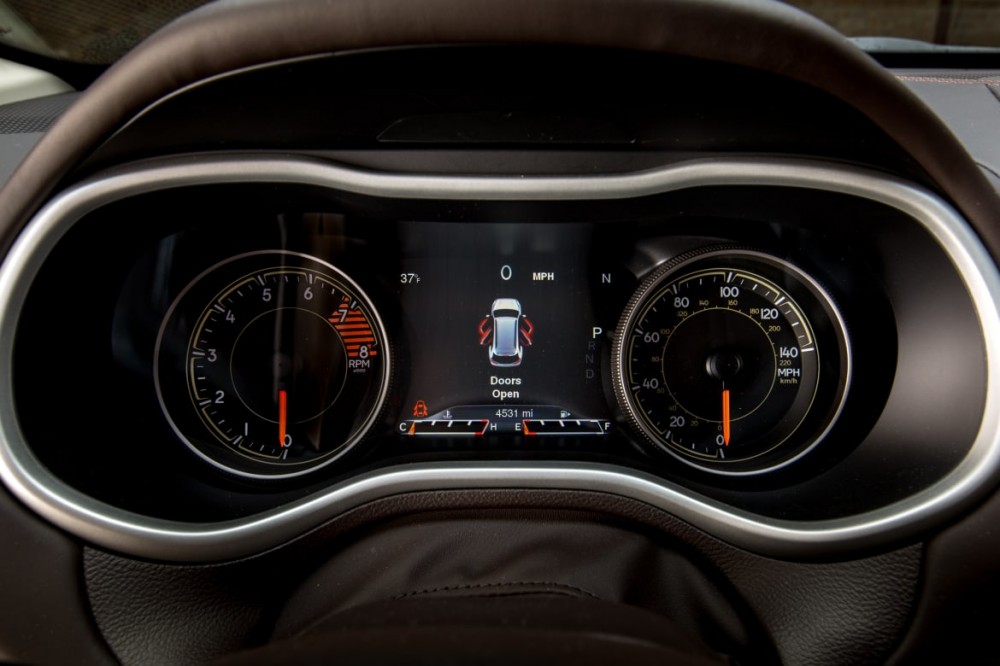
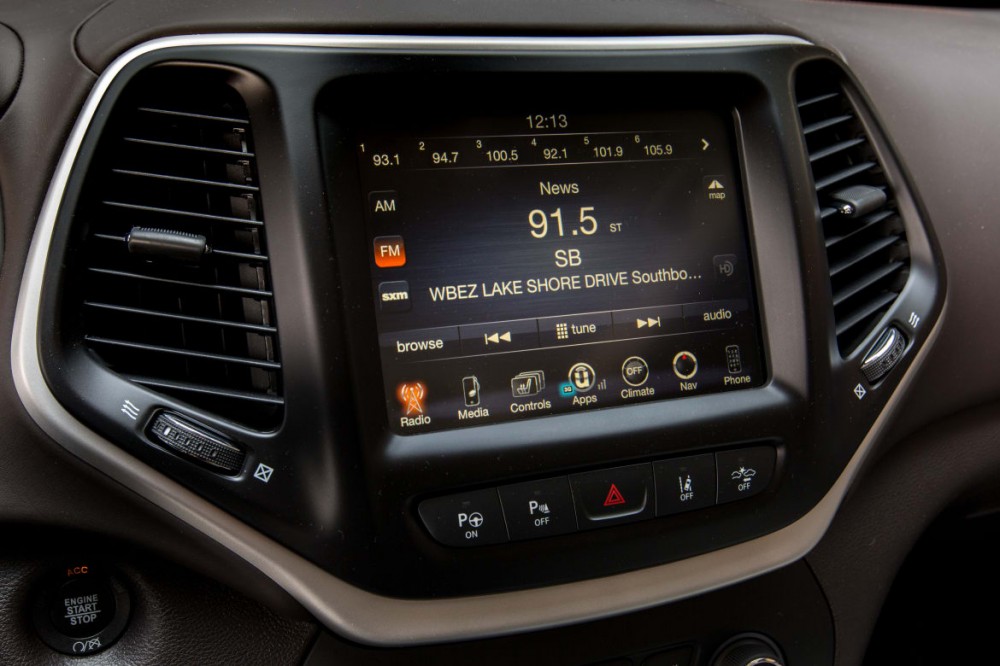
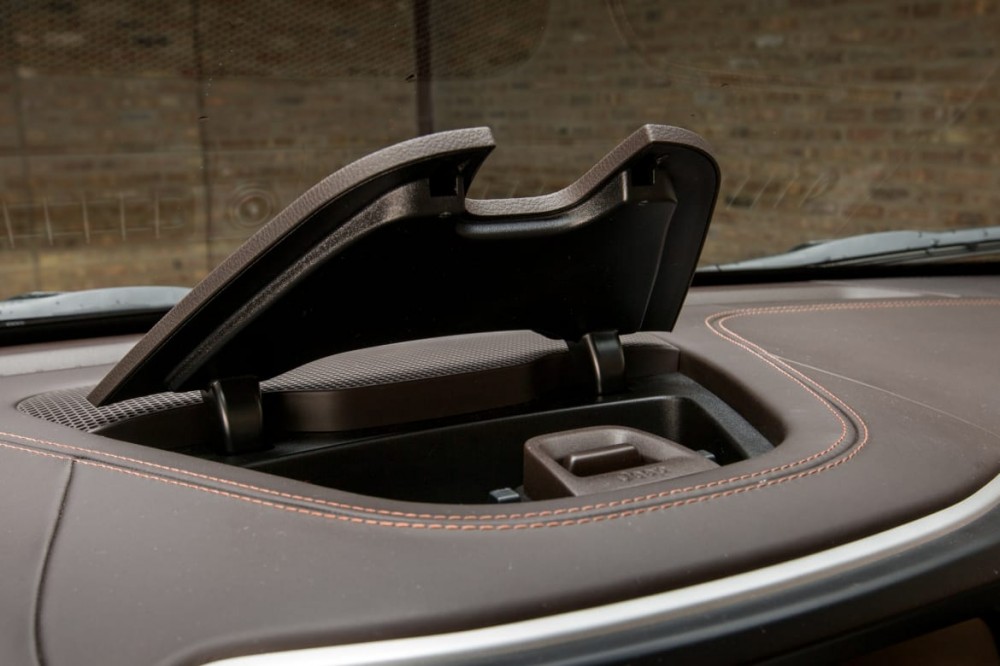
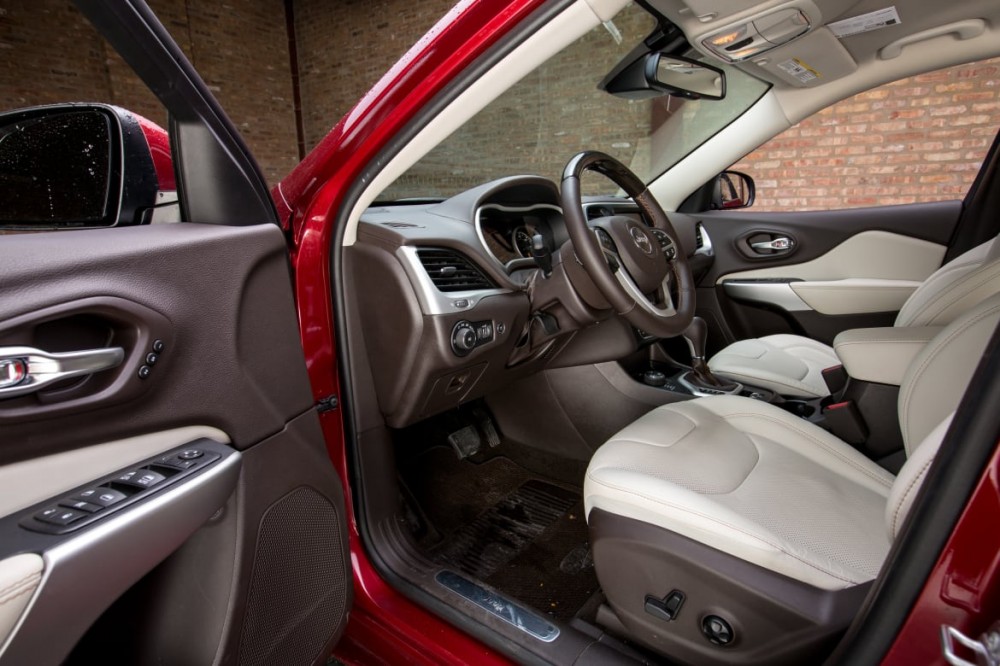
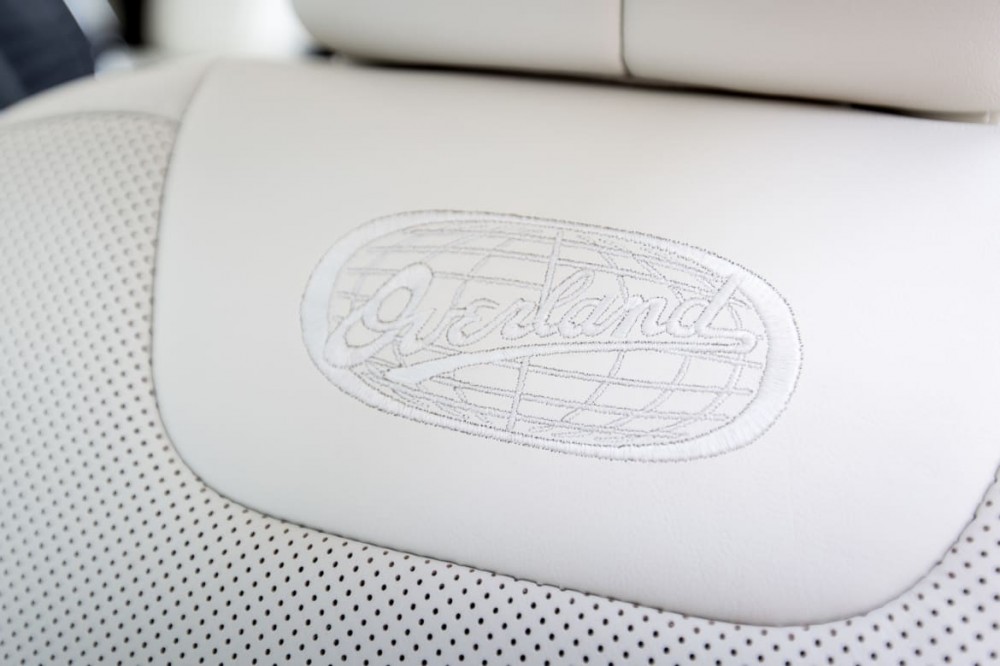
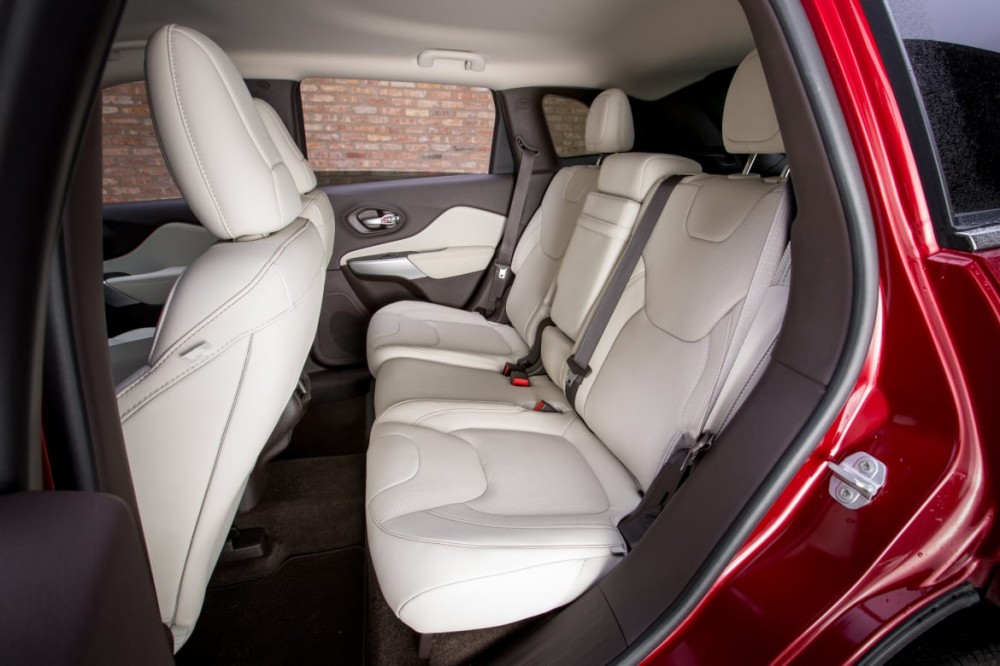
Like the Honda CR-V, the Cherokee's cabin is roomy. Front-seat comfort and space are good for taller drivers, and the backseat is very spacious for adults, with legroom and headroom to spare. Rear-seat thigh support is also good, and the seat slides forward and backward and reclines.
It's easy to get in and out of the Cherokee, too; even though it's an SUV, you step down when getting in as opposed to stepping up.
Jeep's Uconnect 8.4-inch touchscreen multimedia system is optional. The system has easy-to-use menus and a line of system-selection icons at the bottom of the screen. It's easy to pair your phone using Bluetooth, and the screen responds quickly to selections. It also works when you're wearing gloves.
Certain versions of Uconnect 8.4 come with a built-in navigation system. It works fine and includes traffic data, but the map graphics look too low-tech for an embedded system. The onscreen image from the optional backup camera is similarly unimpressive; it's low-resolution and looks blurry.
At the same time, traditional (but still useful) interfaces have been preserved. There are big volume and tuning knobs, and the secondary climate controls below the screen are nice to have if you'd rather not use the screen to control the ventilation system.
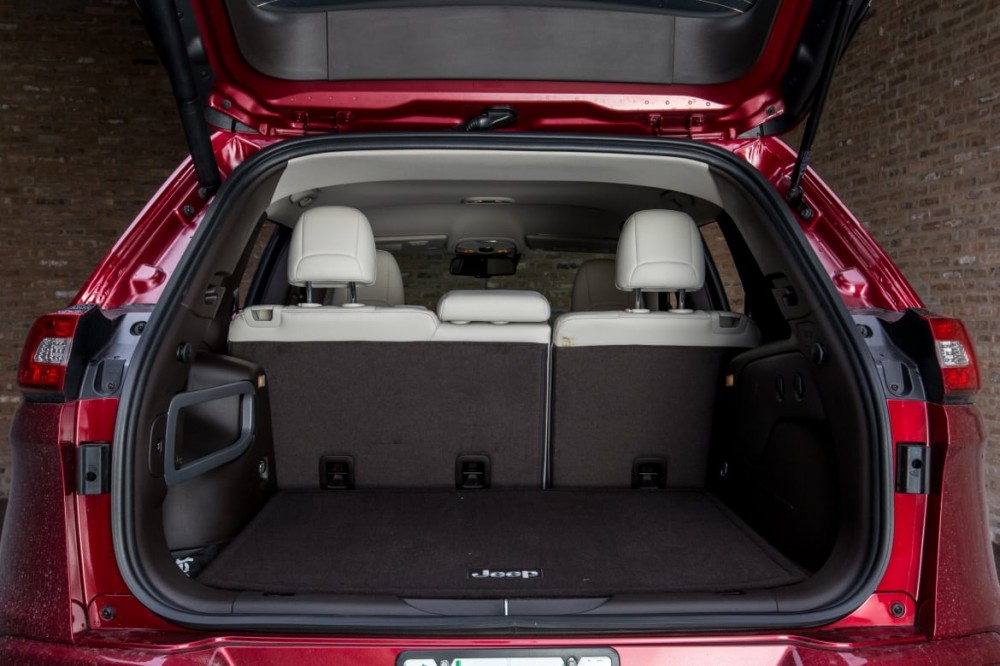
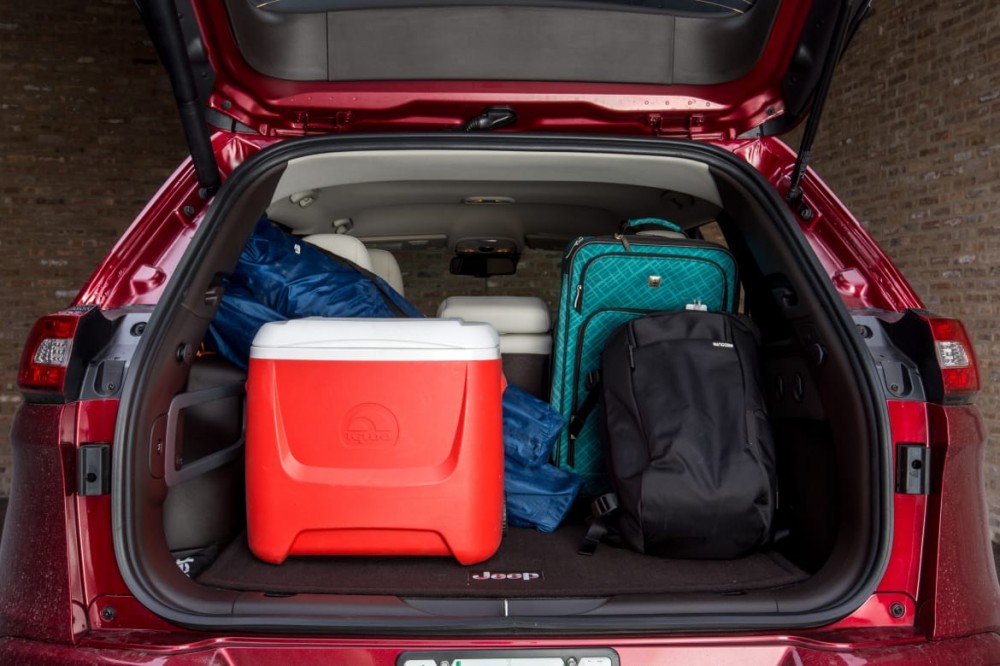
The Cherokee's cargo area measures 24.6 cubic feet with the rear seat up and at its rearmost position, and there's 54.9 cubic feet of space when the rear seat is folded flat and level with the cargo floor. Both the CR-V and RAV4 have more cargo room: The CR-V has 39.2 cubic feet with the backseat up and 75.8 when it's folded, while the RAV4 has 38.4 cubic feet behind the backseat and 73.4 when it's folded.
Safety
The Insurance Institute for Highway Safety gave the Cherokee its top crash-test rating, good (out of a possible good, acceptable, marginal and poor), in all tests but the difficult small-overlap front crash test, where it received a marginal rating. The IIHS has also rated the Cherokee's optional collision warning system with automatic emergency braking, judging it superior — the highest rating possible.
Other available active safety features include a blind spot warning system, rear cross-traffic alert, and lane departure warning and prevention. Lane departure prevention is active at midrange speeds and will gently steer you back to the center of your lane if it senses you've drifted toward lane markings without signaling.
Value in Its Class
From its refined ride and upscale interior to its easy-to-use multimedia system, the Cherokee has a lot going for it in a competitive part of the SUV market. The nine-speed automatic transmission, however, remains this SUV's biggest weak spot — especially when paired with the standard four-cylinder engine. The $1,745 V-6 helps with some but not all of the transmission's issues.
But there's a bigger issue here: When you can't realistically consider a car's base drivetrain because of how poorly it performs, as I can't with the Cherokee, can you trust other versions of it? Even though the V-6 Cherokee drives better, there are still too many issues for me to say yes.








